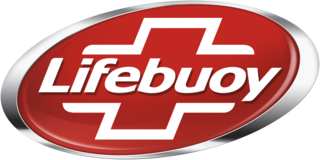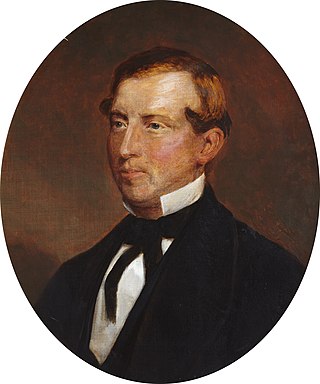
Carbolic soap, sometimes referred to as red soap, is a mildly antiseptic soap containing carbolic acid (phenol) and/or cresylic acid (cresol), both of which are phenols derived from either coal tar or petroleum sources. [1] [2]

Carbolic soap, sometimes referred to as red soap, is a mildly antiseptic soap containing carbolic acid (phenol) and/or cresylic acid (cresol), both of which are phenols derived from either coal tar or petroleum sources. [1] [2]
In 1834, German chemist Friedlieb Ferdinand Runge discovered a phenol, also known as carbolic acid, which he derived in an impure form from coal tar. In August 1865, Dr. Joseph Lister applied a piece of lint dipped in carbolic acid solution to the wound of an eleven-year-old boy at Glasgow Royal Infirmary, who had sustained a compound fracture after a cart wheel had passed over his leg. After four days, he renewed the pad and discovered that no infection had developed, and after a total of six weeks he was amazed to discover that the boy's bones had fused back together, without the danger of suppuration. [3] [4]
One of the earliest manufacturers of carbolic soap was F. C. Calvert and Company of Manchester, England, established in 1859 and taken over by Unilever in 1965. [5] [6] In the United States, the license for manufacturing carbolic soap was held by James Buchan and Company. [7] In 1894, William Lever, 1st Viscount Leverhulme, introduced the Lifebuoy brand of carbolic soap to the market. [8] [9]
One of the distinctive features of this soap is its deep pink to red colour, which was and still is added to the soap to designate it as carbolic soap. The addition of the red colour was deemed important due to the fact that when carbolic soap was first introduced to the general public it was the only germicidal soap available. Carbolic acid is used in a wide range of industrial and consumer product applications and can be a skin irritant. [10]
It is still distributed to disaster victims for routine hygiene by the Red Cross and other relief organisations. [11]
A bactericide or bacteriocide, sometimes abbreviated Bcidal, is a substance which kills bacteria. Bactericides are disinfectants, antiseptics, or antibiotics. However, material surfaces can also have bactericidal properties based solely on their physical surface structure, as for example biomaterials like insect wings.
Coal tar is a thick dark liquid which is a by-product of the production of coke and coal gas from coal. It is a type of creosote. It has both medical and industrial uses. Medicinally it is a topical medication applied to skin to treat psoriasis and seborrheic dermatitis (dandruff). It may be used in combination with ultraviolet light therapy. Industrially it is a railroad tie preservative and used in the surfacing of roads. Coal tar was listed as a known human carcinogen in the first Report on Carcinogens from the U.S. Federal Government.

Joseph Lister, 1st Baron Lister, was a British surgeon, medical scientist, experimental pathologist and a pioneer of antiseptic surgery and preventative medicine. Joseph Lister revolutionised the craft of surgery in the same manner that John Hunter revolutionised the science of surgery.

Phenol, or Benzenol, is an aromatic organic compound with the molecular formula C6H5OH. It is a white crystalline solid that is volatile. The molecule consists of a phenyl group bonded to a hydroxy group. Mildly acidic, it requires careful handling because it can cause chemical burns.

Salicylic acid is an organic compound with the formula HOC6H4COOH. A colorless, bitter-tasting solid, it is a precursor to and a metabolite of aspirin (acetylsalicylic acid). It is a plant hormone, and has been listed by the EPA Toxic Substances Control Act (TSCA) Chemical Substance Inventory as an experimental teratogen. The name is from Latin salix for willow tree, from which it was initially identified and derived. It is an ingredient in some anti-acne products. Salts and esters of salicylic acid are known as salicylates.

Picric acid is an organic compound with the formula (O2N)3C6H2OH. Its IUPAC name is 2,4,6-trinitrophenol (TNP). The name "picric" comes from Greek: πικρός (pikros), meaning "bitter", due to its bitter taste. It is one of the most acidic phenols. Like other strongly nitrated organic compounds, picric acid is an explosive, which is its primary use. It has also been used as medicine (antiseptic, burn treatments) and as a dye.

Creosote is a category of carbonaceous chemicals formed by the distillation of various tars and pyrolysis of plant-derived material, such as wood, or fossil fuel. They are typically used as preservatives or antiseptics.
Cresols are a group of aromatic organic compounds. They are widely-occurring phenols which may be either natural or manufactured. They are also categorized as methyl phenols. Cresols commonly occur as either solids or liquids because their melting points are generally close to room temperature. Like other types of phenols, they are slowly oxidized by exposure to air, and the resulting impurities often give the samples a yellow to brownish red tint. Cresols have an odor characteristic to that of other simple phenols, reminiscent to some of a "coal tar" smell. The name "cresol" is an adduct of phenol and their traditional source, creosote.

Antibacterial soap is a soap which contains chemical ingredients that purportedly assist in killing bacteria. The majority of antibacterial soaps contain triclosan, though other chemical additives are also common. The effectiveness of products branded as being antibacterial has been disputed by some academics as well as the U.S. Food and Drug Administration (FDA).

Pine tar is a form of wood tar produced by the high temperature carbonization of pine wood in anoxic conditions. The wood is rapidly decomposed by applying heat and pressure in a closed container; the primary resulting products are charcoal and pine tar.

Aurin, sometimes named rosolic acid or corallin is an organic compound, forming yellowish or deep-red crystals with greenish metallic luster. It is practically insoluble in water, freely soluble in alcohol. It is soluble in strong acids to form yellow solution, or in aqueous alkalis to form carmine red solutions.

In organic chemistry, alkyl nitrites are a group of organic compounds based upon the molecular structure R−O−N=O, where R represents an alkyl group. Formally they are alkyl esters of nitrous acid. They are distinct from nitro compounds.

Lifebuoy is a brand of soap marketed by Unilever. Lifebuoy was originally, and for much of its history, a carbolic soap containing phenol. The soaps manufactured today under the Lifebuoy brand do not contain phenol. Currently, there are many varieties of Lifebuoy.

Phenyl salicylate, or salol, is the organic compound with the formula C6H5O2C6H4OH. It is a white solid. It is occasionally used in sunscreens and as an antiseptic.

George Hogarth Pringle was a Scottish-Australian surgeon. He qualified in medicine from Edinburgh, Scotland and then worked in the Royal Infirmary of Edinburgh along with the young Joseph Lister with whom he continued to correspond. He settled in Parramatta, New South Wales, Australia and is credited with introducing Listerian antisepsis into Australia.

Arthur Ernest Sansom FRCP was an English physician, known for his pioneering research on anaesthesiology, the use of carbolic acid in medicine, and diagnosis of heart disease.
Creolin is a generic name for disinfectants whose composition varies according to origin. One of its uses is as a disinfectant. It is extracted from the dry distillation of wood. The residue remaining in the autoclave vessel is a dark, syrupy mass called creosote, which is composed mainly of phenolic acid and cresylic acid. The original composition of creolin was this creosote tar oil, caustic soda, soaps, and very little water. It is of low technology and a very powerful disinfectant.
John Rutherford Ryley was an Australian surgeon who studied medicine in Glasgow, where he learned about Listerian antisepsis from Joseph Lister. He emigrated to New Zealand and introduced antiseptic surgery there in January 1868. Most of his career was then spent in Australia. He killed himself at the age of 46.
Jules Lemaire, born on February 17, |1814 in Ferrières (Seine-et-Marne) and died on March 8, 1873, in Les Lilas (Seine-Saint-Denis), was a French doctor and pharmacist. He was the first to discover the antiseptic properties of carbolic acid (phenol).
License for manufacturing these compounds has been granted to JAMES BUCHAN & CO., of New York, who have the exclusive right to manufacture Carbolic and Cresylic Soaps in the United States.